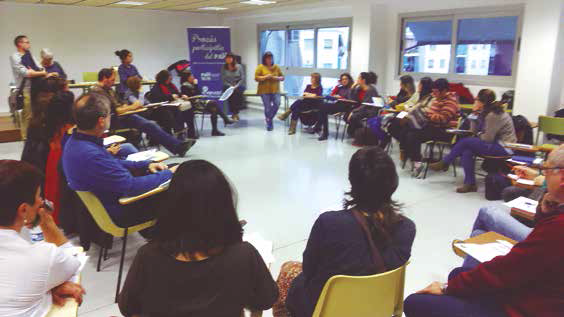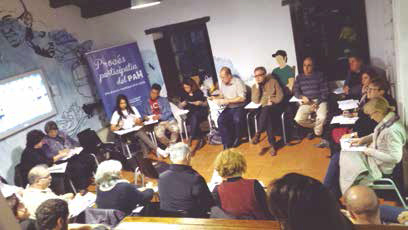Spain
Santa Coloma de Gramanet City Council
May 2015 / April 2016
 11th.
11th.
Santa Coloma de Gramenet has developed a participatory process to involve citizens in the preparation of the 2016-2019 Municipal Action Plan (MAP). The main objective of the process was to move from participation to citizen involvement, ie to achieve citizen co-responsibility not only with the contribution and evaluation of proposals but also with the monitoring of the application.
Santa Coloma de Gramenet has developed a participatory process to involve citizens in the development of the 2016-2019 Municipal Action Plan (MAP, PAM in Spanish). The main objective of the process was to move from participation to citizen involvement, ie, to obtain co-responsibility for citizenship, not only to provide evaluations and proposals, but also Implementation of the MAP.
In order to achieve this, the Citizens' Forum was established, as provided for in the government's regulations on participation and transparency. MAP's proposals and implementation have been linked with the participatory budgeting process of the years concerned. To reach the maximum number of people, creative activities were conceived and people were sought in a segmented and fragmented way, with the idea of ââreaching out to all the groups and making it easy for the inhabitants of the Common: a mobile MAP that moves in all the neighborhoods of the city and in different formats. Examples include a thematic activity, centered in the 1980s, to gather proposals from middle-aged people, allowing a toy library in some activities to promote parental involvement, Discussions to reach young people and the creation of a "WFP Passport" to encourage participation in more than one activity.
One of the key elements of the process was the incorporation of 5 young people from the city with collaborative scholarships paid to work and facilitate the whole participatory process. His strong involvement has helped to advance the process in the city and involve people who usually do not participate.
The specific objectives developed by this experiment are as follows:
• Promote closer proximity to the Municipal Council with a more open, diversified and street-level design, by increasing the number of participation activities.
• Listen to the specificities of the collective or groups of citizens / constituted by the city.
• Co-responsibility and shared management of common property.

The participatory process for the MAP preparation consisted of 4 phases:
Preliminary phase: Developed at the end of 2015 by the municipal technical services to define the axes and the objectives of work. The activities of the participatory process are planned, and proposals for activities proposed by citizenship are discussed. A "Handbook for the Participatory Process" is published. This tool was shared with the public, which allowed individuals and groups to introduce new activities not originally planned.
Phase of priority and proposal collection:
This phase took place for 81 days and consisted of 50 different activities.
Participation is structured into 4 work zones. The city of people (social axis), the city to live together (territorial axis), the open city (participatory axis), and the city of the future (economic and R & D axis).
Thanks to the activities the citizens decided to prioritize the objectives set by the City Council. In addition, they made new proposals deemed necessary. In this phase, the Priority Objectives and the proposals for concrete actions are obtained. The five "Proposal Hunters" scholarship students stimulated this phase. Activities of a traditional character and also fun and creative in the different districts were made.

Evaluation phase:
The MAP team ordered and ranked the proposals and drafted the participatory process report that was published later.
The proposals have been classified as follows:
· Proposals that are already developing or have joined the MAP proposed by the city council.
· Proposals to be studied by the district councils (district) (decentralized offices to meet the needs of the districts)
· Proposals of subjects without municipal competence, confused, or general opinions
· Proposals to be put to the vote.
In the Citizen Forum, final act of the participatory process, we outlined the priorities and eligibility of the specific proposals received, and the news was voted.
This experience is regarded as innovative for the originality and creativity applied to the participatory process of MAP that motivated many people in the city to help the action of the municipal government's decision-making. The participation of citizenship in this process has encouraged the transfer of this practice to other processes in which the people's opinion is required.
Guarantee the proximity with work at the level of the street, for 81 days with 50 activities of the different themes and formats that have been organized for the citizenship which made it possible to make a better MAP, more civilized, more complete, more human, more social , more solidarity ...
Another great value of the experience is the contribution of the 5 young students, the residents of Santa Coloma de Gramenet, integrated into the "MAP team" who experienced the experience "from the inside" and collaborated in the “Development of participatory process activities.